I have a test case demonstrating my problem.
It runs instantly, when you add the following 4 short files into a new Flex Mobile project in Flash Builder 4.6:

src/TestFXG.mxml:
<?xml version="1.0" encoding="utf-8"?>
<s:ViewNavigatorApplication
xmlns:fx="http://ns.adobe.com/mxml/2009"
xmlns:s="library://ns.adobe.com/flex/spark"
firstView="Home">
</s:ViewNavigatorApplication>
src/assets/en/Star.fxg:
<?xml version='1.0' encoding='UTF-8'?>
<fxg:Graphic xmlns:fxg="http://ns.adobe.com/fxg/2008" version="2">
<fxg:Path x="9.399" y="10.049" data="M 82.016 78.257 L 51.895 69.533 L 27.617 89.351 L 26.621 58.058 L 0.231 41.132 L 29.749 30.52 L 37.714 0.241 L 56.944 24.978 L 88.261 23.181 L 70.631 49.083 Z">
<fxg:fill>
<fxg:SolidColor color="#FFFFFF"/>
</fxg:fill>
<fxg:stroke>
<fxg:SolidColorStroke
caps="none"
color="#FFFF66"
joints="miter"
miterLimit="4"
weight="10"/>
</fxg:stroke>
</fxg:Path>
</fxg:Graphic>
src/Home.mxml:
<?xml version="1.0" encoding="utf-8"?>
<s:View xmlns:fx="http://ns.adobe.com/mxml/2009"
xmlns:s="library://ns.adobe.com/flex/spark"
xmlns:my_components="*"
title="Display random amount of stars">
<fx:Script>
<![CDATA[
import Star;
import spark.core.SpriteVisualElement;
private static const STAR:SpriteVisualElement = new Star();
]]>
</fx:Script>
<my_components:MyComp />
</s:View>
src/MyComp.as:
package {
import flash.display.DisplayObject;
import flash.display.Sprite;
import flash.utils.getDefinitionByName;
import mx.core.UIComponent;
import spark.core.SpriteVisualElement;
import assets.Star;
public class MyComp extends UIComponent {
private static const WHAT:String = "assets.en.Star";
override protected function createChildren():void {
super.createChildren();
for (var i:uint = 0; i < 3; i++) {
var star:Star = new Star();
//var star:SpriteVisualElement = new (getDefinitionByName(WHAT) as Class)();
star.x = Math.random() * 100;
star.y = Math.random() * 100;
addChild(star);
}
}
}
}
My question is: provided I have many appropriately named FXG files in the assets sub-directory (in my real application I have spades_queen.fxg, spades_king.fxg, spades_ace.fxg etc.) - how can I select an FXG file at the runtime?
The commented line above gives me the runtime error:
ReferenceError: Error #1065: Variable Star is not defined.
at global/flash.utils::getDefinitionByName()
When I move the src/assets/en/Star.fxg to src/Star.fxg everything works...